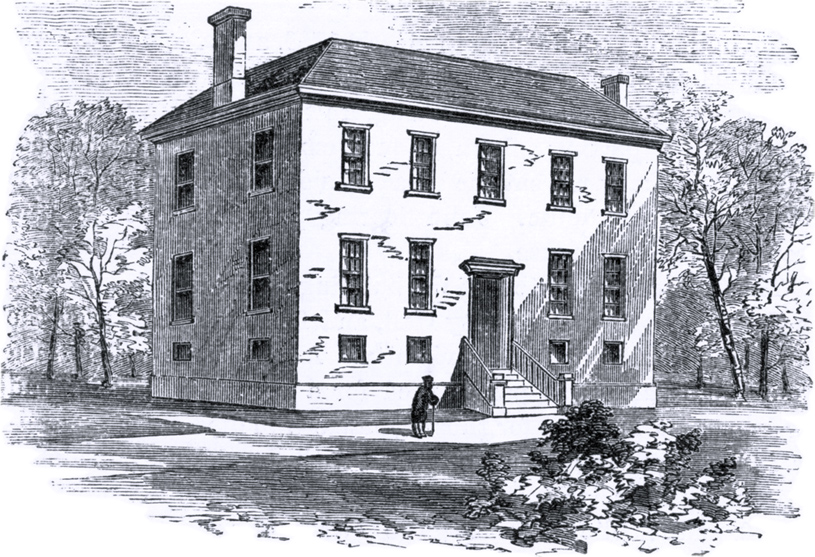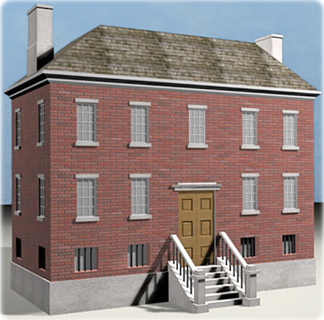
Poor House in the Fields

The first Alms House, better known as the Poor House, was erected in 1735 in the Fields (now City Hall Park), on the site of the present City Hall, in New York City. This historic building was adjacent to the John Harris property, the first house built in the Fields, in the 1720s. The map of Gerard Bancker of 1774 shows the precise location of the Poor House.
According to Phelps Stokes (Iconography of Manhattan Island, ... 1915) The first consideration of this subject by the Common Council was taken on March 24, 1714, when a committee was appointed to consult the Mayor on the construction of a poor house and house of correction in the City.
On November 15, 1734, another committee was appointed by the Common Council "to Inspect and Enquire for a proper House and Ground to be purchased by this Corporation to be Converted into a House of Correction and a Workhouse and upon what Terms Such A Convenient House can be purchased and in what place and of whom." (Minutes of the Common Council, IV: 236). On December 20, a resolution of the Common Council resolved to build at its own expense "A good, Strong and Convenient House and Tenement, upon part of the unimproved Lands of this Corporation, on the North Side of the Lands late of Coll Dongan Commonly Called the Vineyard." It was also resolved that the building should be called the "Publick Workhouse and House of Correction".
On March 31, 1735, the building committee reported that they had agreed with John Burger "for Building the Workhouse and taking Accounts of all the Materialls to be used on the Stone and Brick Work". The committee also reported that they had engaged John Roome to take charge of the carpenter work. The workhouse was reported as completed in September, 1735 (N.Y Journal, September 23, 1735).
On March 3, 1736, a committee of the common council was appointed "to Enquire upon what Terms this Corporation may hire an able and sufficient Person to be keeper of the House of Correction and Overseer of the Workhouse and Poorhouse". The committee was also to consider what furniture, utensils, and stock would be needed for these institutions. On March 31, the committee informed the common council that, for the position of keeper, they had selected John Sebring and his wife. The committee recommended that "a large Garden be forthwith fenced, plowed up and made round the said House for the raising of all kind of Roots Herbs &c: for the use of the poor in the said House".
On May 15, 1739, it was ordered that an additional building be erected for a hospital for contagious diseases.
A committee was appointed on April 15, 1746, to have the poorhouse enlarged, on March 6, 1752, to have a bell-tower erected thereon and on March 19, 1757, to fence in a piece of ground for a burial-place next to the fence on the east side of the almshouse. In 1766-7, an addition to the building was built and another in 1769.
In January 1794, the Common Council decided that the old buildings were in a state of disrepair and had become unfit for the comfortable accommodation of the poor. Construction of the second Alms House began in 1896, near to the first one, and completed in May 1897, when the common council ordered the commissioners of the almshouse to remove the inhabitants out of the old into the new Alms House.
The old buildings were demolished by order of the common council of June 19, 1797. In 1803, construction of the New York City Hall began on the site and it was completed in 1812.

|
Copyright © Geographic Guide - Old NYC, 18th Century. |
Above, the Poor House in the Field from Duer's Old Yorker collection, New York Public Library.
Below, a computer-generated 3-D rendering of the building, published by H. Arthur Bankoff and Alyssa Loorya, in the Archaeology Magazine, 2007.
